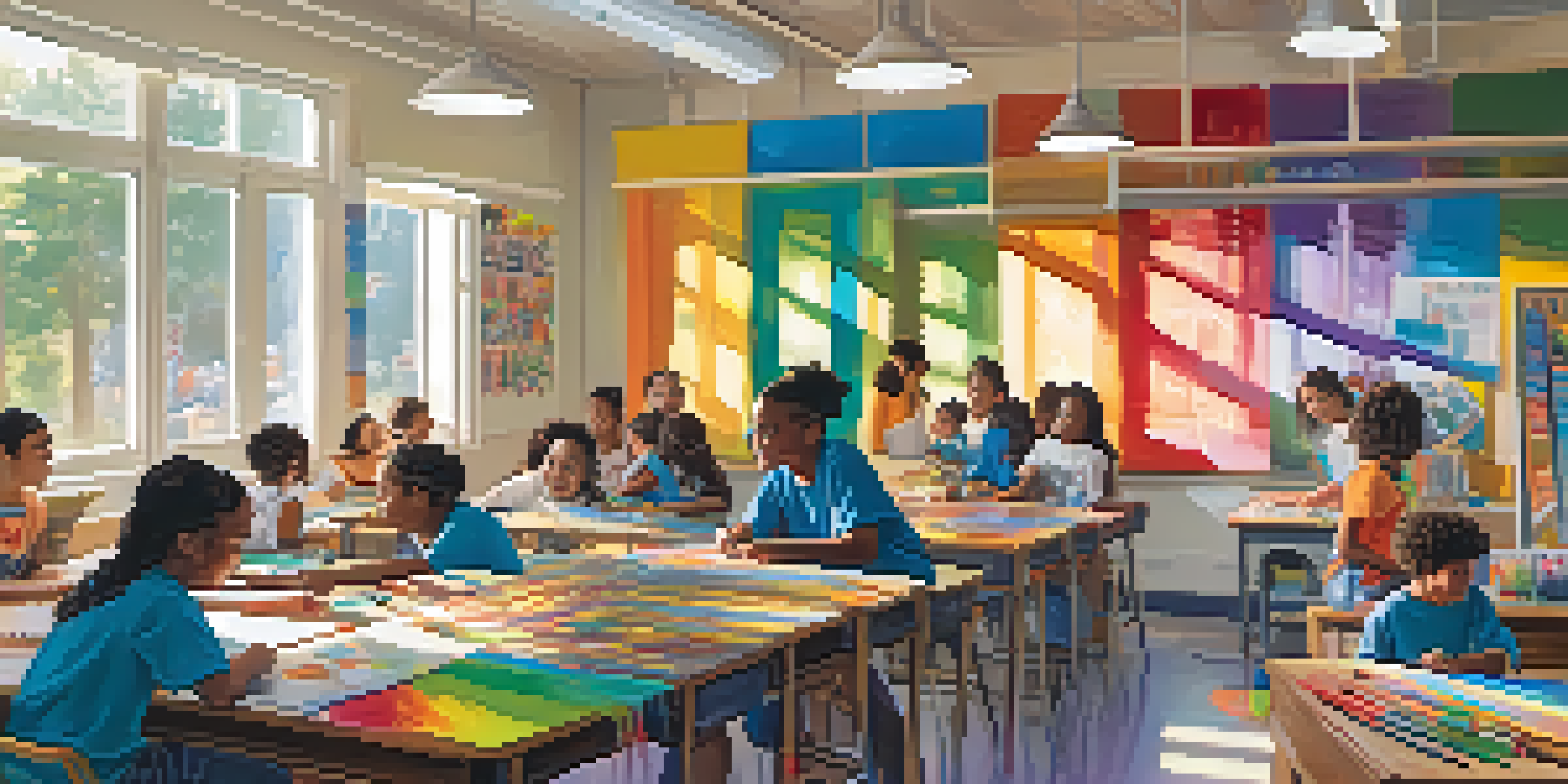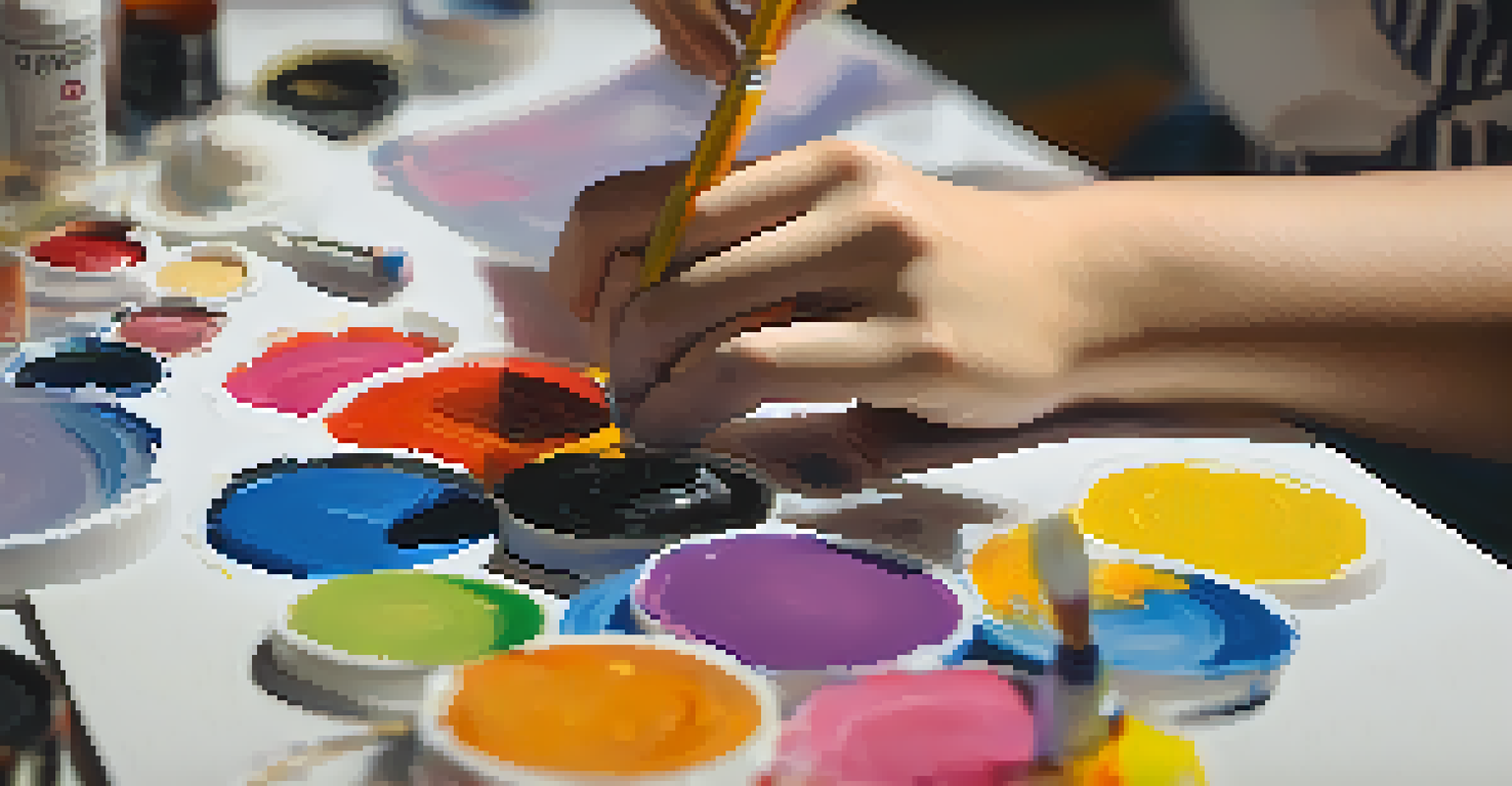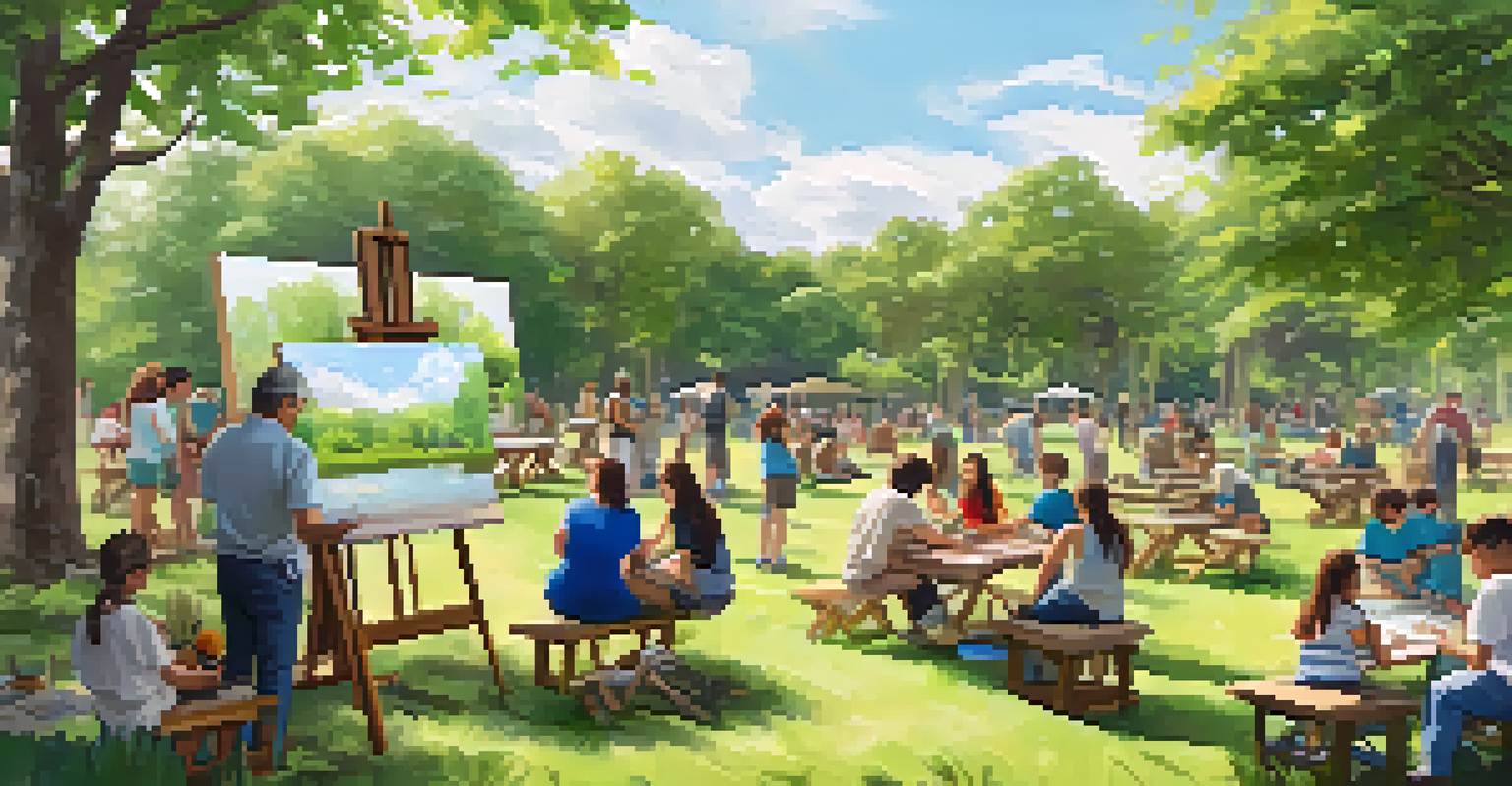Assessing the Impact of Public Policy on Art Education Access

Understanding the Role of Public Policy in Education
Public policy serves as a framework that guides educational practices, including art education. It encompasses laws, regulations, and funding decisions that determine how resources are allocated within schools. Understanding this role is essential for recognizing how art programs can thrive or struggle based on governmental priorities.
Art is not freedom from discipline, but disciplined freedom.
When policymakers prioritize art in educational initiatives, they can enhance access to creative learning for students. This prioritization can manifest in various forms, such as funding for art supplies, hiring qualified art instructors, or integrating art into the core curriculum. Conversely, neglecting art education in policy discussions can lead to diminished opportunities for students to engage with the arts.
Moreover, the impact of public policy is not uniform; it varies significantly across different regions and communities. In areas where public policy actively supports the arts, we often see vibrant programs that enrich students’ educational experiences. Understanding these dynamics is crucial for advocates pushing for increased art access.
The Importance of Art Education in Schools
Art education plays a vital role in fostering creativity, critical thinking, and emotional expression among students. Engaging in the arts can help students develop skills that are increasingly valuable in today’s job market, such as innovative problem-solving and adaptability. It’s more than just painting or drawing; it’s about nurturing a well-rounded individual.

Beyond skill-building, art education also contributes to academic performance. Studies have shown that students involved in arts programs tend to perform better in other subjects, such as math and reading. This holistic approach to learning underscores the need for policies that support art education as part of a comprehensive academic experience.
Public Policy Shapes Art Education
Public policy directly influences the availability and quality of art education through funding, regulations, and educational priorities.
Additionally, art education promotes cultural awareness and appreciation, vital in our diverse society. By exploring various artistic traditions and practices, students can gain insights into different cultures, fostering empathy and understanding. This cultural dimension makes art education not only important for individual growth but also for social cohesion.
Challenges Faced by Art Education in Policy
Despite its benefits, art education often faces significant challenges due to public policy decisions. Budget cuts are a recurring issue, where funding for arts programs is frequently the first to be reduced. This can lead to a lack of resources, insufficient materials, and ultimately, fewer opportunities for students to engage in creative activities.
Every child is an artist. The problem is how to remain an artist once we grow up.
Moreover, standardized testing pressures can overshadow the importance of art education. With an increasing focus on core subjects like math and science, art programs may be viewed as less essential. This can result in schools prioritizing test preparation over creative learning, limiting students' exposure to the arts.
Another challenge is the disparity in access to art education across different socio-economic backgrounds. Schools in wealthier districts may have robust art programs, while those in less affluent areas struggle to offer even basic art classes. This inequity raises important questions about fairness and accessibility in education, highlighting the need for policy reforms.
Successful Policies Promoting Art Education Access
Some successful public policies have been implemented to promote access to art education. For instance, initiatives that allocate specific funding for arts programs can significantly increase resources available to schools. These targeted investments can help schools hire qualified instructors and provide students with necessary materials.
Another effective approach is integrating arts education into the broader curriculum. Policies that encourage interdisciplinary learning can create opportunities for students to engage with art in a more meaningful way. For example, incorporating art into science or history classes can help students see the connections between different fields.
Art Education Enhances Learning
Engagement in art education fosters creativity, critical thinking, and cultural awareness, contributing positively to overall academic performance.
Additionally, community partnerships play a pivotal role in enhancing art access. Collaborations between schools and local art organizations can provide students with unique experiences, such as workshops, exhibitions, and mentorship programs. Such partnerships not only enrich the educational experience but also help foster a sense of community around the arts.
Advocacy for Stronger Art Education Policies
Advocating for stronger art education policies requires a concerted effort from various stakeholders, including educators, parents, and community members. By raising awareness about the importance of art in education, advocates can help shift public perception and influence policymakers. This grassroots approach can be incredibly effective in driving change.
Engaging in dialogue with policymakers is crucial for ensuring that art education is part of the broader educational conversation. This can involve attending school board meetings, participating in advocacy groups, or even organizing community events focused on the arts. By making their voices heard, advocates can highlight the value of art education and push for supportive policies.
Furthermore, leveraging data and success stories can strengthen the case for art education. Sharing research that demonstrates the positive impact of art on student outcomes can provide compelling evidence to policymakers. When advocates present a well-rounded argument, they are more likely to garner support for initiatives that enhance art education access.
The Future of Art Education and Public Policy
The future of art education will largely depend on how public policy evolves in response to societal needs. As awareness grows about the importance of arts in education, there may be a shift toward more supportive policies that prioritize creative learning. This could lead to increased funding and resources for art programs across the board.
Moreover, the integration of technology in art education presents exciting opportunities. Policies that encourage innovative teaching methods, such as digital art or virtual collaborations, can help engage a new generation of students. Embracing these advancements can further enrich the art education experience and make it more accessible to all.
Advocacy is Key for Art Access
Strong advocacy efforts from educators, parents, and community members are essential to promote and sustain policies that support art education.
Ultimately, the key to a vibrant future for art education lies in collaboration and advocacy. By fostering partnerships between schools, communities, and policymakers, we can create an ecosystem that values and supports creative learning. Together, we have the power to shape a future where art education is accessible and celebrated for all students.
Conclusion: The Path Forward for Art Education Access
In conclusion, assessing the impact of public policy on art education access reveals both challenges and opportunities. While there are significant hurdles, such as funding cuts and inequities, there are also successful initiatives and advocacy efforts that can pave the way for change. Understanding these dynamics is crucial for anyone invested in the future of education.
Moving forward, it’s essential to maintain a dialogue about the importance of art in schools. By emphasizing the benefits of art education, we can foster a more supportive environment for policies that prioritize creativity and expression. This ongoing conversation can help ensure that future generations of students have access to the arts.

Ultimately, the future of art education access hinges on collective action. By working together—educators, parents, students, and policymakers—we can help create a landscape where art education is not just an afterthought but a fundamental component of a well-rounded education.